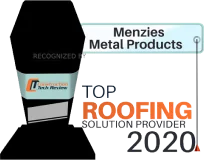Which roof drain standard should you specify?
Different roof drain manufacturers use different recognized (and some unrecognized) standards to which they claim compliance. While compliance with recognized standards is probably good for the industry as a whole, the standard chosen for compliance does matter. When choosing a drain for a flat roof application one standard rises above the others. It is the one standard of real value and the one architects, specifiers and contractors should look to. We will examine that standard and several others in use to show why.
ASME A112.6.4–2003 (R2008), “Roof, deck and balcony drains”. “This Standard establishes minimum design requirements for roof drains, including general purpose, gutter and cornice, parapet and promenade, balcony, or deck types, which convey rainwater from the roof area of building structures. It includes definitions, nomenclature, outlet types and connections, dome or grate-free area, top loading classifications, materials and finishes, and accessories.” (1.1) This is a referenced standard in the 2012 Uniform Plumbing Code, chapter 14, REFERENCED STANDARDS. Canadian Standards Association (CSA), IAPMO Testing and Research, Quality Assurance Institute (QAI) and Intertek list to this standard. It covers many detailed requirements regarding drains. Outlet types and outlet connections, dome requirements, materials, fasteners, finishes, extension collars and under-deck clamps; all are dealt with here. In 1.5.2.1, which defines a roof drain, it states “It is composed of a drain body (sump)”. This means the drain must have a bowl. Some roof drains have no bowl so cannot meet this standard. They may conform to a lesser standard and some claim to do so. We will examine such standards.
CSA B79-08 “Commercial and residential drains and cleanouts”. This is the Canadian Standards Association standard and in Canada supersedes all others. Their ‘Reference publications’ lists ASME A112.6.4 (4.1.2), which deals with sumps. Outlets, connections, fasteners, grates are dealt with. Flow requirements and strainers are left to be dealt with under the other referenced standards. “Sumps” here, if believed to be synonymous with “body”, have only a requirement to be equal to the cross section of the outlet pipe connected to.
ANSI SPRI RD1 2009 “Performance Standard for Retrofit Drains”. This standard has flow requirements (8.0) and has requirements regarding the strainer as well (6.0) but does not require a sump or bowl (2.2). The main purpose of this standard, however, is to ensure a watertight seal at the drain flange and drain stem. Flanges are required to have a clamping ring or be heat welded. Drain stems are required to have a “watertight mechanical compression seal”. This seal is tested under a 10 foot head of water for 24 hours and cannot leak.
ANSI SPRI RD1 2009 is used by architects and specifiers as a method of ensuring leak free roof drains. The fact that it does not require a drain sump or bowl does allow use of roof drains with inferior performance.
ASME A112.21.2 “Roof Drains”. This standard was withdrawn in 1995 but is still being cited by roof drain manufacturers. Beware.
LAPSED LISTINGS. Another item to beware of is lapsed listings. A product whose listing is not current is not listed. This actually happens. Manufacturers who were once listed but no longer are still advertise their products as being listed. Architects and specifiers are in danger of unknowingly specifying products with no approval listing. It is easy to verify a manufacturer’s listing on the listing agency’s website or just ask the manufacturer or rep to provide verification.
Note: Most of Menzies Metal Products roof drains have been tested by QAI and listed to ASME A112.6.4 and CSA B79.


